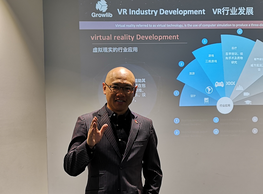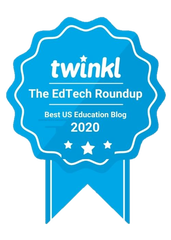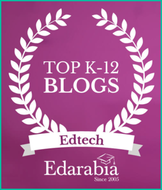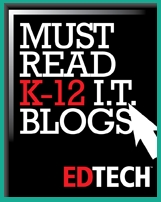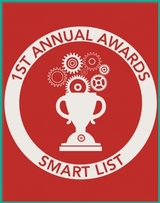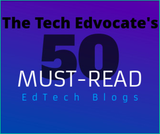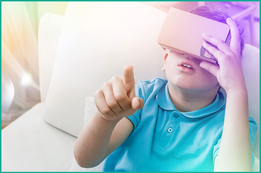
Here, virtual reality (VR) expert and regular conference presenter around the world, Kai Liang unravels the findings of this news report and sheds light on the reality of virtual reality!
Let’s start by defining virtual reality (VR) which is an artificial environment that is created with software and presented to the user, typically through a VR headset; the user suspends belief and accepts it as a real environment. In the education sector popular VR headsets include those from ClassVR or RedBoxVR. VR is often confused with augmented reality (AR) which is the technology that adds a layer of computer created content on top of real-life images to enable user interaction, for example apps on touchscreen mobile devices.
Proponents of VR believe that it is an excellent educational tool, which helps to improve performance and conceptual understanding on a specific range of tasks. It is, of course, particularly beneficial in allowing students to play a more active role in learning by exploring and manipulating three-dimensional, interactive environments that create a feeling of ‘being there’; especially beneficial for concepts that can’t be ‘seen’. Taking chemistry as an example of one curriculum area, rather than trying to understand atoms and molecules from a textbook, using VR, students can ‘fly’ inside various molecules, making invisible atomic and molecular chemistry concepts visible, interactive, and experienced on a human scale.
As all teachers know, science education is all about ‘hands-on’ experiences and real-world exploration from which solid foundation for learning or pattern finding is achieved; VR experiences offer incredible value in bringing hard to reach areas of the curriculum to life.
VR in learning somewhat goes against the modern idealism of education; it’s anti-social, with students operating in isolation. However, there is no other more powerful way for students to ‘see’ and experience such concepts from such an incredibly ‘real’ perspective. And while there is no communication when they have the headsets on, once they take them off, you will have never seen such a level of passionate communication amongst even the quietest of students!
And certainly, VR applications are evolving at an incredibly fast rate with many of the technology giants including Microsoft, Google, Facebook, Samsung, Huawei, Lenovo, Tencent, Baidu, Xiaomi and Alibaba investing heavily in VR hardware and content. Of course, while the hardware headsets are important, the quality of the content is the real king! Google Expeditions, zSpace, Lifeliqe and my personal favorite MEL Science are examples of high-quality content providers. MEL Science’s strength is based on it starting out as a science education company, not a VR developer. Its shift towards VR content animating hundreds of chemical reactions has been driven purely by the learning benefits; driven by children, experiencing the excitement of hundreds of chemical reactions. It’s not about VR it’s about using the technology for education to enable students to interact with relevant but otherwise invisible micro-level processes; for me, this is the right way to approach VR content development.
I am lucky enough to be leading or playing an active part in the majority of EdTech developments in China, Australia, Romania, UK, South East Asia and soon India and Middle East. In China, the government is committed to VR in education, and its education sector expenditure on technologies including VR grows around eight per cent year on year. With all this in mind, I was interested in finding out more about Google’s perceived move away from VR hardware production. Of course, as with many news items, the headline doesn’t tell the full story.
At first glance, the headline suggests its move away from VR is because it doesn’t believe in the benefits of the technology. However, when you read further, Google has actually started open sourcing its VR content.
Google’s decision to move away from VR hardware development is something I have been aware of for a long time; it was not based on its lack of belief in the power of VR in education. Google stopped supporting Daydream technologies, because it doesn’t see a future for smartphone-based VR in a box, and I agree with that. VR on mobile phones is clearly not the best way of experiencing the content right now. The second reason for its decision is because it doesn’t yet see VR education as having a mass market; sadly, this is based on an aged old problem that we see too often in education; it’s not a big enough audience to attract these big multi-national giants. Google is one of the most powerful technology providers of mobile phones, thus expecting the sales for any of its products to be in the millions. The current uptake of VR in schools is gaining good speed, but this is simply NOT comparable to the quantity of business Google expects in the consumer space.
The changing face of VR supply
So, where does this leave schools who do appreciate the value of VR in the classroom?
When I started out in the VR space, there were more than a hundred VR content developers in China. Looking only at sales from the mass market, these companies were trying to be everything for everyone. Unsurprisingly, today, this has thinned down to leave only a few of the highest quality providers across the world; those who are fully committed to supporting the education sector. As the appreciation of the power of VR starts to spread around the education sector, and more schools commit to the technology, we will see these high quality EdTech developers grow further, increasing the quality and diversity of their learning content. The future is bright!
VR maturity
Google’s announcement unpinned the growing realization that for major EdTech corporations, it’s hard to produce high quality educational VR resources; the education market is just not big enough for them. But for those companies who understand the sector’s curriculum aligned needs and who are committed to the power of learning through VR, significant opportunities are there. As the market matures, we are seeing the good ones thrive with reduced prices. The education content providers that are surviving are those who are carefully matching the content to the curriculum; in effect the market has created its own natural filter of quality.
While the initial perception of VR in schools may be that it’s too expensive, there are now plenty of very affordable options.
At an entry level schools can actually make VR headsets very easily out of cardboard! One step up from this is DIY kits that produce a plastic headset; a slightly better VR experience for around $25. Taking another step up in terms of cost and quality comes manufactured headsets such as Oculus Go’s at around $199.
In September 2019, Huawei announced its new super light and relatively cheap VR Glass headset that can be connected to a smartphone through a special high-speed cable. Its expectation is to sell millions of these which is set to ignite the market; good news for the quality content providers in education.
Similarly, in 2019 Oculus bought out its new 6DOF headset the Oculus Quest. In my opinion this is the first device to have a high enough quality, at an affordable enough price, to really unlock the opportunity for VR. It enables full engagement and a meaningful impact across all areas of the curriculum.
When we look at the growing maturity of VR technology, it’s interesting to note that there are now ten universities in the UK offering a degree course in VR; something that was unheard of a few years ago. So, whether you use VR because of its incredible power to let students experience invisible concepts, or because they will undoubtedly be using the technology in their future lives, VR is here to stay.
It’s easy to talk negatively about any new technology. During times of constrained budgets, investing in a new teaching resource, can be daunting but from my experience, now is the time to start integrating this into your curriculum and building the VR presence in your school.
About the Author
